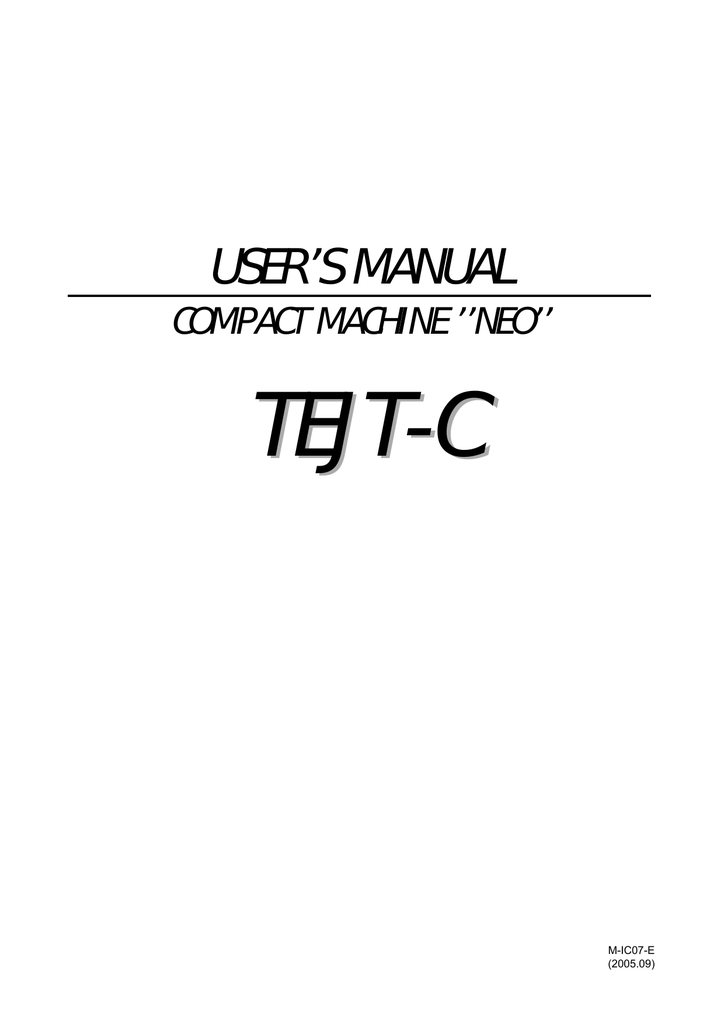Machine Connections. Machine Connections can be handled in a number of ways: 1) If your embroidery machine comes with machine connection software, such as, Ricoma PC Communication Software (EMBsoft.exe) for Ricoma embroidery machine, or 'Happy Link' software for Happy embroidery machine, etc., then 'Connection Manager' is what you need. Jan 17, 2020 Check connection of reader cable. 11: Data set incomplete: After properly setting data, start again. 12: Excessive stitch back: Stitch back is possible up to 71 stitches for tape operation and starting point for memory designs. 13: Prohibited forward ( When offset is set) Set the offset value to zero, or move the frame by a distance of offset. Tajima Writer PLUS converts text to embroidery data, or creates embroidery data by combining registered designs and text. Editing tasks like changing the color of embroidery threads, position adjustments etc., and thread color management in synch with the machine are also possible.
Why Network?
Usb To Serial Connection

Tired of chasing floppy disks around your facility? Sending and receiving your designs with e-mail? The double density 720K disks used by embroidery machines are being replaced by other media in the general computer world and are becoming harder to find. By connecting your machine(s) directly to your design computer, you eliminate the need to maintain a floppy disk library and all the hassles that go with it.
We decided to network our machines for the reasons listed above. As we started planning the process, we were unable to find a comprehensive source of information about how to accomplish our objective. As we went through the process, we discovered a few critical elements that caused us needless expense and frustration.
The purpose of this article is to share our experience so others may avoid the pitfalls we encountered. The specifics in this article apply to Tajima embroidery machines and Wilcom digitizing software, but the principles will be similar for other machines and software. Our network consists of ten Tajima machines but the technology works with just one embroidery machine (actually it's easier).
Planning
Like most other projects, the more time spent planning, the less time spent implementing (and correcting problems you didn't anticipate). First, determine the length of the cables needed. Allow at least an extra 5' beyond the minimum length required. Order the cables as soon as possible.
If there is more than one machine to network, decide how to provide the number of serial ports needed. If the number of machines to connect is small, use a PCI card that plugs in a slot in your computer and provides multiple serial ports. For 4 or more machines, a Comtrol multi-serial port device is recommended. Order any hardware needed to provide the necessary serial ports.

Series And Parallel Connection
Review your software or contact your vendor to see if additional licensing is needed to network machines. In our case, we had to purchase an additional license from Wilcom to control 8-16 computers. Wilcom allows you to control up to 4 machines without additional licensing.
Cables
Tajima embroidery machines have proprietary connections for networking, a standard serial (or null-modem) cable won't work. We found out about this the hard way. Tajima cables (or custom-made cables to Tajima specifications) are needed.
Custom made cables are a viable option, although usually impractical. Pin layout specifications for Tajima machines are available if a source of custom pinned cables is convenient. Tajima distributors sell serial cables in lengths of 25', 50', 75' and 100'. The longer two cables are shielded and are quite expensive. If at all possible, limit your cable runs to 50'.
Tajima Serial Connection Distance Chart
We obtained our cables from Pin Point International, but they are available directly from Hirsch International or Tajima West. The part numbers we used are CABLE-DB9-TAJ-25 and CABLE-DB9-TAJ-50.
